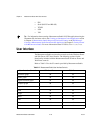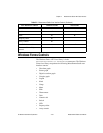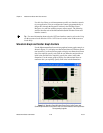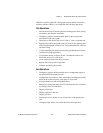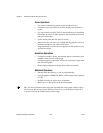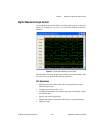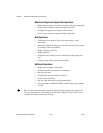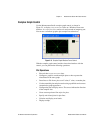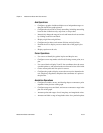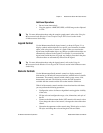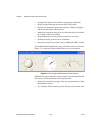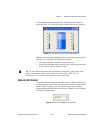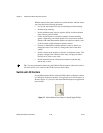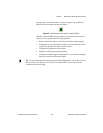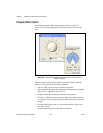Chapter 2 Measurement Studio .NET Class Libraries
Measurement Studio User Manual 2-26 ni.com
Axis Operations
• Configure a graph to include multiple axes or independent ranges so
that plot data fits the graph plot area.
• Configure the axis modes to: fixed; autoscaling, including autoscaling
based on the visible data only; strip chart; or scope chart.
• Interactively change the range of an axis and invert the axis at run time
by clicking on the axis end labels.
• Display origin lines and grid lines.
• Configure major, minor, and custom divisions and origin lines.
• Position the axis to display on one or both sides of the graph’s plot
area.
• Display captions on the axis.
Cursor Operations
• Use cursors to identify key points in plots and the plot area.
• Configure cursor snap modes to be fixed, floating, nearest point, or to
plot.
• Use cursor labels to display X and Y data coordinates that the cursor
crosshair points to, and customize the text font and colors of the label.
• Create custom point and line styles for cursors.
• Configure the graph to display cursors that are used to determine the
real, imaginary, magnitude, and phase data coordinates of a point on
the plot area.
Annotation Operations
• Configure text labels, arrows, and drawing shapes to annotate a point
anywhere in the plot area of the graph.
• Configure range area, text labels, and arrows to annotate a range in the
plot area of the graph.
• Annotate points and ranges of real, imaginary, and magnitude values.
• Annotate and label a range of magnitude values for a particular phase.



